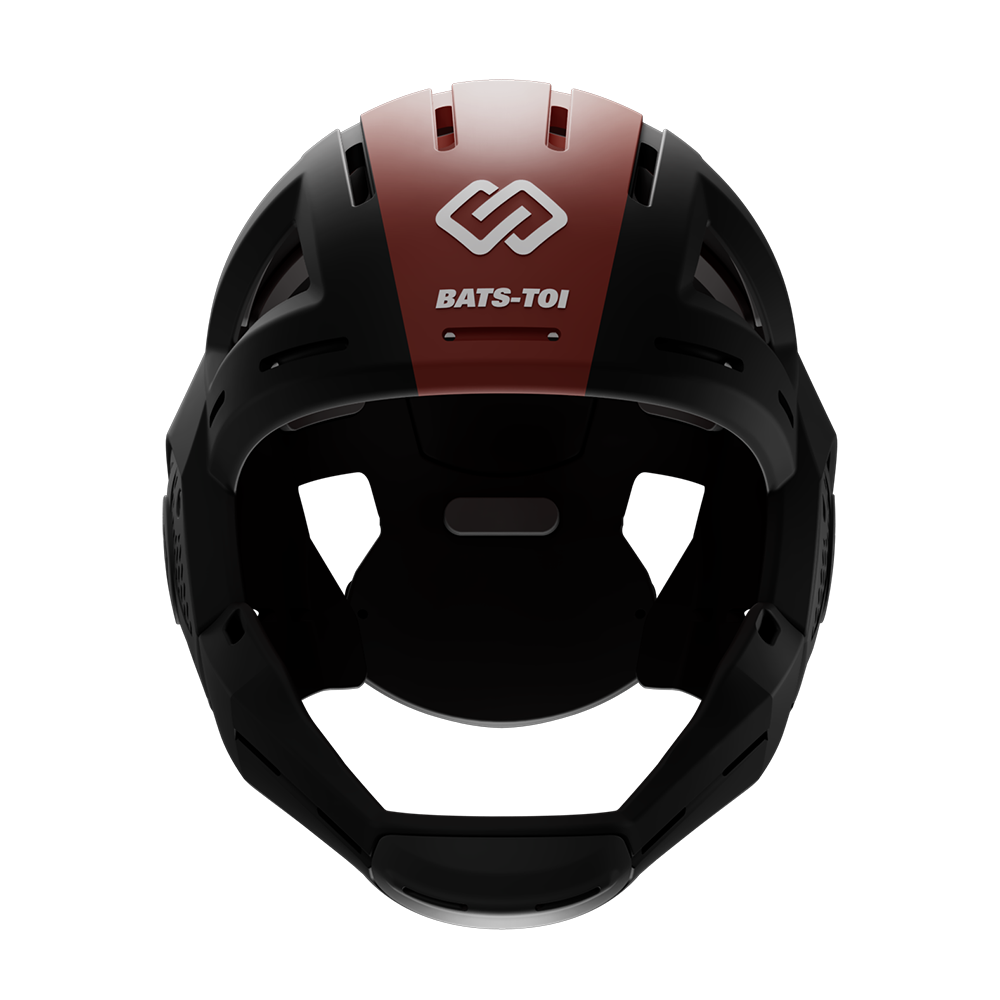One of the oldest companies in the U.S., American Banknote Corporation (ABCorp), continues to stay apace with the 21st century with its 3D printing services. ABCorp has announced a partnership with sporting equipment startup BATS-TOI to produce its multisport headgear with 3D printing.
BATS-TOI’s headgear, dubbed The Mercado, is becoming an increasingly complex device, not only providing protection to wearers, but also incorporating diagnostic sensors to monitor brain waves and two-way communication to improve safety and performance enhancement. BATS-TOI has said that it worked with HP and ABCorp to use HP’s Multi Jet Fusion to 3D print the device at scale. Mario Mercado, founder and CEO of BATS-TOI, elaborates:
“From day one, our focus and purpose at BATS-TOI has been to revolutionize head safety for serious and recreational athletes through innovative design and engineering,” said We worked with our partners at HP and ABCorp to develop a groundbreaking system and process to 3D print The Mercado at scale, as a best-in-class multisport headgear that provides superior protection and performance against head injuries. The Mercado has been recognized as the official wrestling headgear of the National Federation of High Schools (NFHS), and our partnership with ABCorp will ensure we deliver on our commitment to the highest quality standards, not only for wrestlers but for all athletes that need superior head protection to keep them in the game.”
As a centuries-old manufacturing provider, ABCorp has had a diverse array of operations. Primarily, it had focused on anti-forgery technology, collaborating with the First Bank of the United States to design and produce more counterfeit resistant currency in 1795. Now, its work ranges from producing contactless credit cards to developing digital health record certification.
“ABCorp has a history dating back more than 225 years of providing Essential Critical goods and services to world-class companies and federal, state, and local government agencies in more than 120 countries worldwide,” said William Brown, ABCorp Chairman and CEO. “Many of our relationships date back decades, if not centuries, and we do not enter strategic partnerships impulsively. We are pleased to announce our new association with BATS-TOI for the latest generation of smart multisport headgear.”
ABCorp will perform manufacturing at its 125,000 sq. ft. FDA-registered facility, though the date of release has not been specified. However, a predecessor Mercado headpiece is available for purchase. ABCorp’s site already includes dying for MJF and stainless steel 3D printing via Desktop Metal equipment. This may not be the first project applying 3D printing to the production of protective headgear, said to be a potentially very lucrative area of application, but it could be the first with built-in sensors.
It will be interesting to see how ABCorp’s experience with anti-counterfeit technology fits into this project. When MJF was first unveiled, there were several demonstration examples that showcased how the process could be used to 3D print embedded QR codes, quantum dot anti-counterfeiting markers, and electronic sensors into parts.
Here, we can imagine any and all of those interesting capabilities used to integrate the aforementioned sensors, as well as either QR or quantum dot anti-counterfeiting symbols into the Mercado. The fact that the Mercado is said to feature “two-way” communication is also intriguing. It could mean that the headgear includes neurofeedback that sends a vibration or other impulse to the wearer in response to certain types of brainwaves.
In this way, BATS-TOI and ABCorp are entering into the realm of neuro devices akin to Elon Musk’s Neuralink. Particularly given ABCorp’s long history of working with the U.S. government, one can imagine the project taken to another level, in which the two-way communication resembles the neurofeedback programs related to Drs. Jose Delgado and Robert Heath, used to manipulate the brain patterns of patients for mental health reasons. Only, in this case, the device would be used to optimize athletic performance. Regardless of how the device ultimately works, there’s no doubt that it is helping to usher in a brave new world.
3DPrint.com and SmarTech Analysis are hosting Additive Manufacturing Strategies in New York City on February 7-9, 2023. Register for the event here to learn from and network with the most exciting companies and individuals in AM.
Subscribe to Our Email Newsletter
Stay up-to-date on all the latest news from the 3D printing industry and receive information and offers from third party vendors.
You May Also Like
Precision at the Microscale: UK Researchers Advance Medical Devices with BMF’s 3D Printing Tech
University of Nottingham researchers are using Boston Micro Fabrication‘s (BMF) 3D printing technology to develop medical devices that improve compatibility with human tissue. Funded by a UK grant, this project...
3D Printing Webinar and Event Roundup: April 21, 2024
It’s another busy week of webinars and events, starting with Hannover Messe in Germany and continuing with Metalcasting Congress, Chinaplas, TechBlick’s Innovation Festival, and more. Stratasys continues its advanced training...
3D Printing Webinar and Event Roundup: March 17, 2024
It’s another busy week of webinars and events, including SALMED 2024 and AM Forum in Berlin. Stratasys continues its in-person training and is offering two webinars, ASTM is holding a...
3D Printed Micro Antenna is 15% Smaller and 6X Lighter
Horizon Microtechnologies has achieved success in creating a high-frequency D-Band horn antenna through micro 3D printing. However, this achievement did not rely solely on 3D printing; it involved a combination...






























